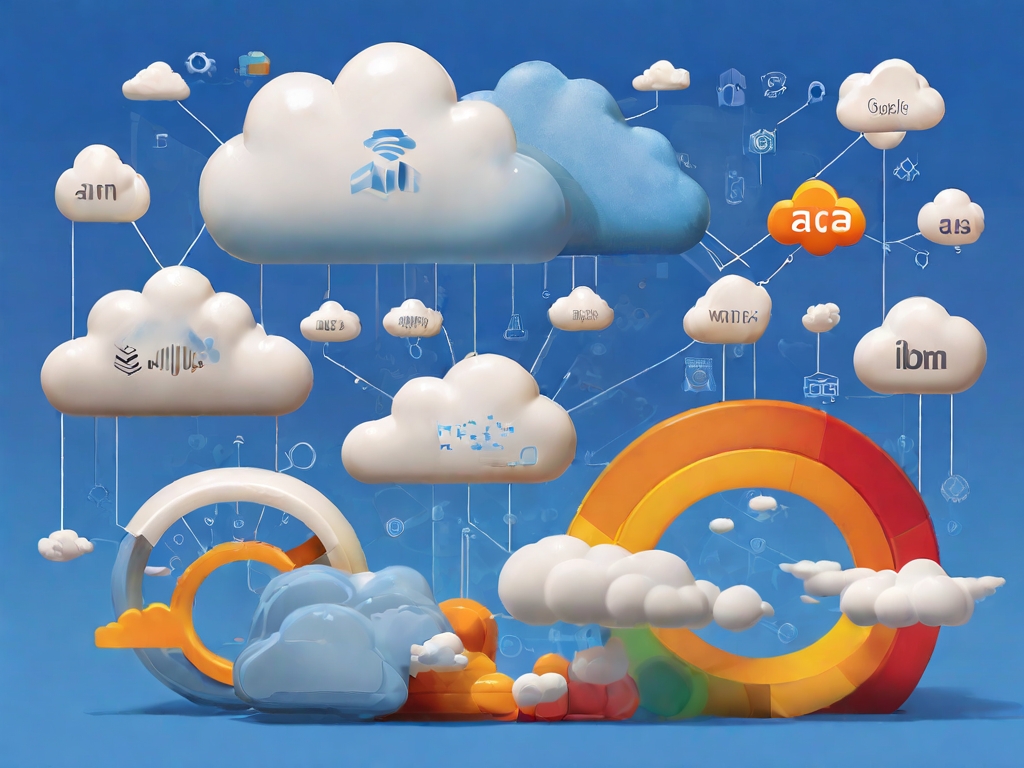
In the ever-evolving landscape of technology, the term “cloud computing” has become ubiquitous. From individuals to large enterprises, the cloud has transformed the way we store, manage, and access data and applications. But what exactly is cloud computing, and why has it become such an integral part of modern computing infrastructure? In this comprehensive guide, we’ll delve into the fundamentals of cloud computing, explore its various components and types, discuss its benefits and challenges, and examine real-world examples of its applications.

Introduction to Cloud Computing
What is Cloud Computing?
At its core, cloud computing refers to the delivery of computing services—including servers, storage, databases, networking, software, and more—over the internet (“the cloud”). Instead of owning and maintaining physical infrastructure or data centers, users can access resources on-demand from cloud service providers on a pay-as-you-go basis. This model offers scalability, flexibility, and cost-efficiency, making it a preferred choice for businesses of all sizes.
Understanding Cloud Technology
Cloud technology encompasses the hardware and software components that enable cloud computing services. It includes virtualization technology for resource pooling, automation for efficient management, and distributed computing for seamless scalability. Key technologies such as virtual machines (VMs), containers, and orchestration tools play crucial roles in creating and managing cloud environments.
Exploring Cloud Solutions
Cloud solutions encompass a wide range of offerings tailored to meet specific needs. These may include Infrastructure as a Service (IaaS), Platform as a Service (PaaS), Software as a Service (SaaS), and Function as a Service (FaaS). Each model provides varying levels of abstraction, allowing users to focus on building and deploying applications without worrying about underlying infrastructure.
Unraveling Cloud Software
Cloud software refers to applications and services delivered over the internet, accessible from web browsers or dedicated client applications. These could be productivity tools, collaboration platforms, customer relationship management (CRM) software, or enterprise resource planning (ERP) systems. Cloud software offers advantages such as automatic updates, accessibility from any device, and scalability based on demand.

Key Concepts in Cloud Computing
What Constitutes “Cloud” in Cloud Computing?
The term “cloud” symbolizes the abstraction of underlying infrastructure. Just as clouds in the sky obscure the details of what lies behind them, cloud computing abstracts away the complexities of physical hardware and network infrastructure. Users interact with virtualized resources, which are provisioned, managed, and maintained by cloud providers.
Cloud Systems and Their Components
Cloud systems comprise several essential components, including:
Virtualization: The process of creating virtual instances of computing resources such as servers, storage, and networks.
Networking: Infrastructure that enables communication between cloud resources, users, and external services.
Storage: Persistent data repositories accessible from anywhere via the internet.
Security: Measures to protect data, applications, and infrastructure from unauthorized access, breaches, and cyber threats.
Computing in Cloud Computing
Computing in cloud computing refers to the execution of workloads, applications, and processes on virtualized resources hosted in the cloud. Users can deploy and scale computing instances as needed, without the constraints of physical hardware limitations.

Understanding Cloud Computing in Depth
Deciphering Cloud Computing: What is it?
In simple terms, cloud computing involves the delivery of computing services—including servers, storage, databases, networking, software, and more—over the internet. This model enables users to access resources on-demand, without the need for extensive upfront investment in physical infrastructure.
Cloud Programming: Bridging the Gap
Cloud programming involves the development of applications and services specifically designed to run on cloud infrastructure. This may include writing code that leverages cloud-native services such as serverless computing, managed databases, and AI/ML platforms. Cloud programming often emphasizes scalability, resilience, and cost optimization.
Exploring Cloud Environments
A cloud environment encompasses the infrastructure, platforms, and services provided by a cloud provider. This includes public clouds like AWS, Azure, and Google Cloud, private clouds deployed within an organization’s data centers, and hybrid clouds that combine elements of both.
Examples of Cloud Computing
Real-world examples of cloud computing abound across various industries:
E-commerce: Online retailers leverage cloud infrastructure to handle peak traffic, manage inventory, and process transactions securely.
Healthcare: Electronic health record (EHR) systems hosted in the cloud enable seamless access to patient data across healthcare providers.
Finance: Banks and financial institutions use cloud-based analytics platforms for risk management, fraud detection, and compliance.

Advanced Topics in Cloud Computing
Cloud Engineering: Building for the Future
Cloud engineering involves designing, building, and managing cloud infrastructure and services. This includes architectural design, automation, continuous integration/continuous deployment (CI/CD), and performance optimization to meet business objectives efficiently.
Harnessing Cloud Services
Cloud services encompass a wide array of offerings, including computing power, storage, databases, machine learning, analytics, and more. By leveraging these services, organizations can accelerate innovation, reduce time to market, and focus on their core competencies.
AWS Cloud Computing: Leading the Pack
Amazon Web Services (AWS) is a leading cloud computing platform, offering a comprehensive suite of services for computing, storage, networking, databases, machine learning, and more. With a global presence and a vast ecosystem of partners and customers, AWS has become synonymous with cloud computing excellence.

Benefits and Challenges of Cloud Computing
Advantages of Cloud Computing
Cloud computing offers numerous benefits, including:
Scalability: Easily scale resources up or down based on demand, without upfront investment in hardware.
Flexibility: Access resources from anywhere with an internet connection, using any device.
Cost-Efficiency: Pay only for what you use, with no wasted resources or overprovisioning.
Reliability: Cloud providers offer high availability, redundancy, and disaster recovery capabilities.
Innovation: Rapidly deploy new features, experiment with emerging technologies, and stay competitive in a fast-paced market.
Challenges of Cloud Computing
However, cloud computing also presents challenges, such as:
Security and Compliance: Concerns about data privacy, regulatory compliance, and the risk of breaches and cyber attacks.
Vendor Lock-In: Dependency on a single cloud provider may limit flexibility and increase switching costs.
Performance: Variability in network latency, resource contention, and shared infrastructure may impact performance.
Data Transfer Costs: Moving large volumes of data in and out of the cloud can incur significant expenses.
Skills Gap: Finding and retaining talent with expertise in cloud technologies and best practices can be challenging.

Conclusion
In conclusion, cloud computing has revolutionized the way organizations approach IT infrastructure and application development. By providing access to scalable, flexible, and cost-effective resources over the internet, cloud computing enables businesses to innovate, grow, and adapt to changing market dynamics. However, realizing the full potential of cloud computing requires careful planning, execution, and ongoing optimization. As technology continues to evolve, the cloud will undoubtedly remain a cornerstone of modern computing infrastructure, driving innovation and powering the digital economy forward.
